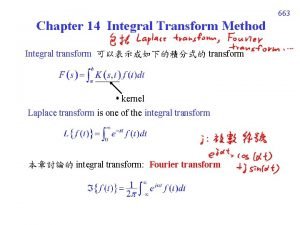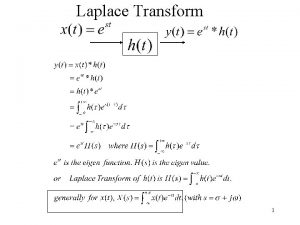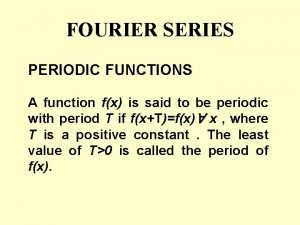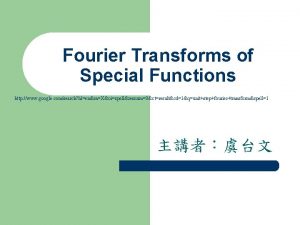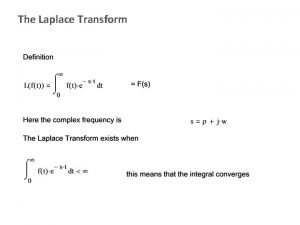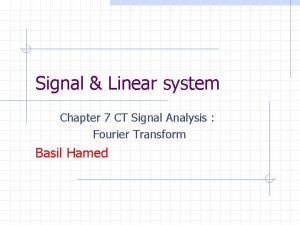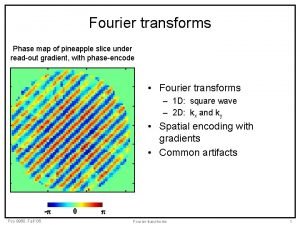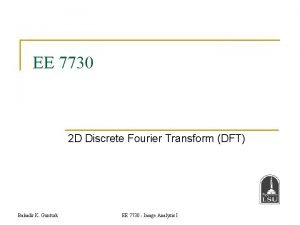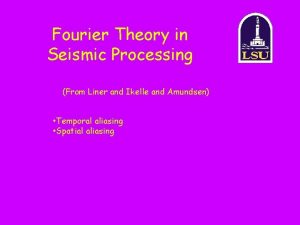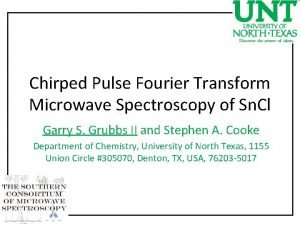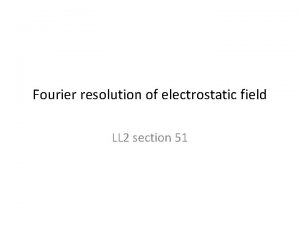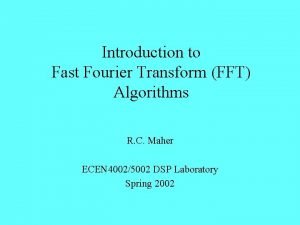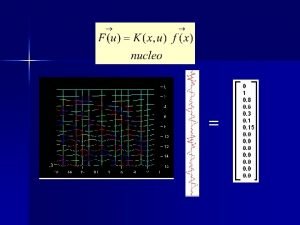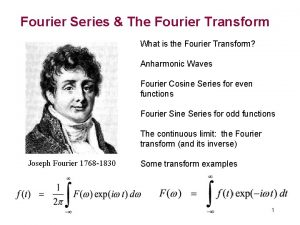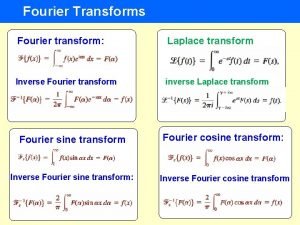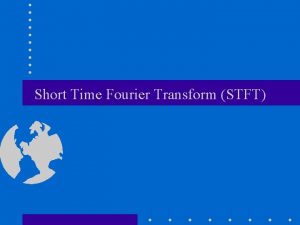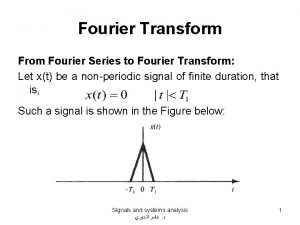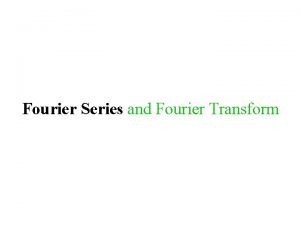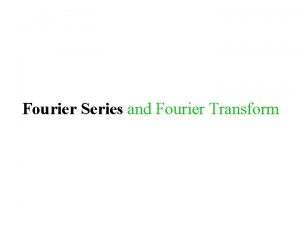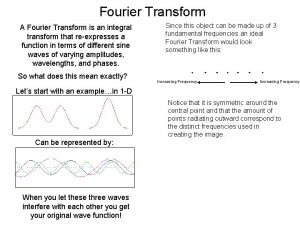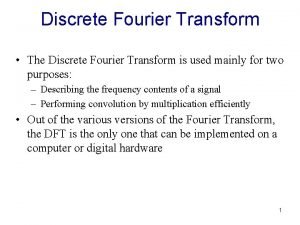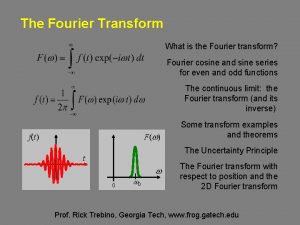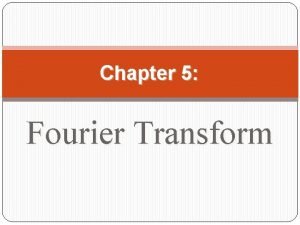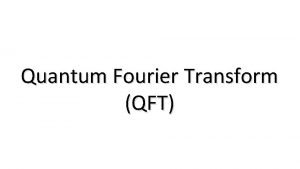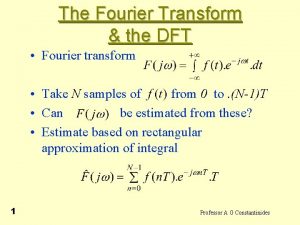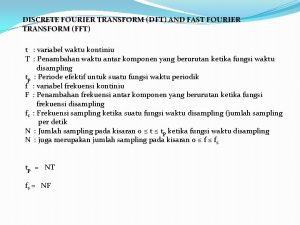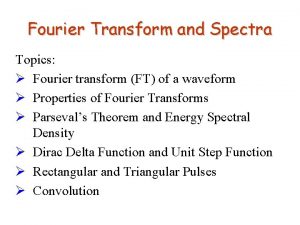FOURIER TRANSFORM Fourier Transform We want to understand





















- Slides: 21

FOURIER TRANSFORM

Fourier Transform • We want to understand the frequency w of our signal. So, let’s reparametrize the signal by w instead of x: f(x) Fourier Transform F(w) • For every w from 0 to inf, F(w) holds the amplitude A and phase f of the corresponding sine – How can F hold both? Complex number trick! F(w) Inverse Fourier Transform f(x)

Time and Frequency • example : g(t) = sin(2 pi f t) + (1/3)sin(2 pi (3 f) t)

Time and Frequency • example : g(t) = sin(2 pi f t) + (1/3)sin(2 pi (3 f) t) = +

Frequency Spectra • example : g(t) = sin(2 pi f t) + (1/3)sin(2 pi (3 f) t) = +

Frequency Spectra • Usually, frequency is more interesting than the phase

Frequency Spectra = = +

Frequency Spectra = = +

Frequency Spectra = = +

Frequency Spectra = = +

Frequency Spectra = = +

Frequency Spectra =

Frequency Spectra

Fourier Transform – more formally Represent the signal as an infinite weighted sum of an infinite number of sinusoids Note: Arbitrary function Single Analytic Expression Spatial Domain (x) Frequency Domain (u) (Frequency Spectrum F(u)) Inverse Fourier Transform (IFT)

Fourier Transform • Also, defined as: Note: • Inverse Fourier Transform (IFT)

Fourier Transform Pairs (I) Note that these are derived using angular frequency ( )

Fourier Transform Pairs (I) Note that these are derived using angular frequency ( )

Fourier Transform and Convolution Let Then Convolution in spatial domain Multiplication in frequency domain

Fourier Transform and Convolution Spatial Domain (x) Frequency Domain (u) So, we can find g(x) by Fourier transform IFT FT FT

Properties of Fourier Transform Spatial Domain (x) Frequency Domain (u) Linearity Scaling Shifting Symmetry Conjugation Convolution Differentiation Note that these are derived using frequency ( )

Properties of Fourier Transform
 To understand recursion you must understand recursion
To understand recursion you must understand recursion Fourier transform gaussian
Fourier transform gaussian Fourier transform pair
Fourier transform pair Relation between laplace and fourier transform
Relation between laplace and fourier transform Periodic function fourier transform
Periodic function fourier transform Fisher transform trading strategy
Fisher transform trading strategy Fourier transform of step
Fourier transform of step Fourier transform table
Fourier transform table Fourier transform of impulse signal
Fourier transform of impulse signal Laplace and fourier transform table
Laplace and fourier transform table Fourier transform properties table
Fourier transform properties table Fourier transform
Fourier transform Discrete fourier transform
Discrete fourier transform Frft meaning
Frft meaning Fourier transform seismic
Fourier transform seismic Fourier transformation properties
Fourier transformation properties Chirped pulse fourier transform microwave spectroscopy
Chirped pulse fourier transform microwave spectroscopy Fourier transform formula
Fourier transform formula Fft
Fft Amplitude5
Amplitude5 Windowed fourier transform
Windowed fourier transform Inverse fourier transform formula
Inverse fourier transform formula


